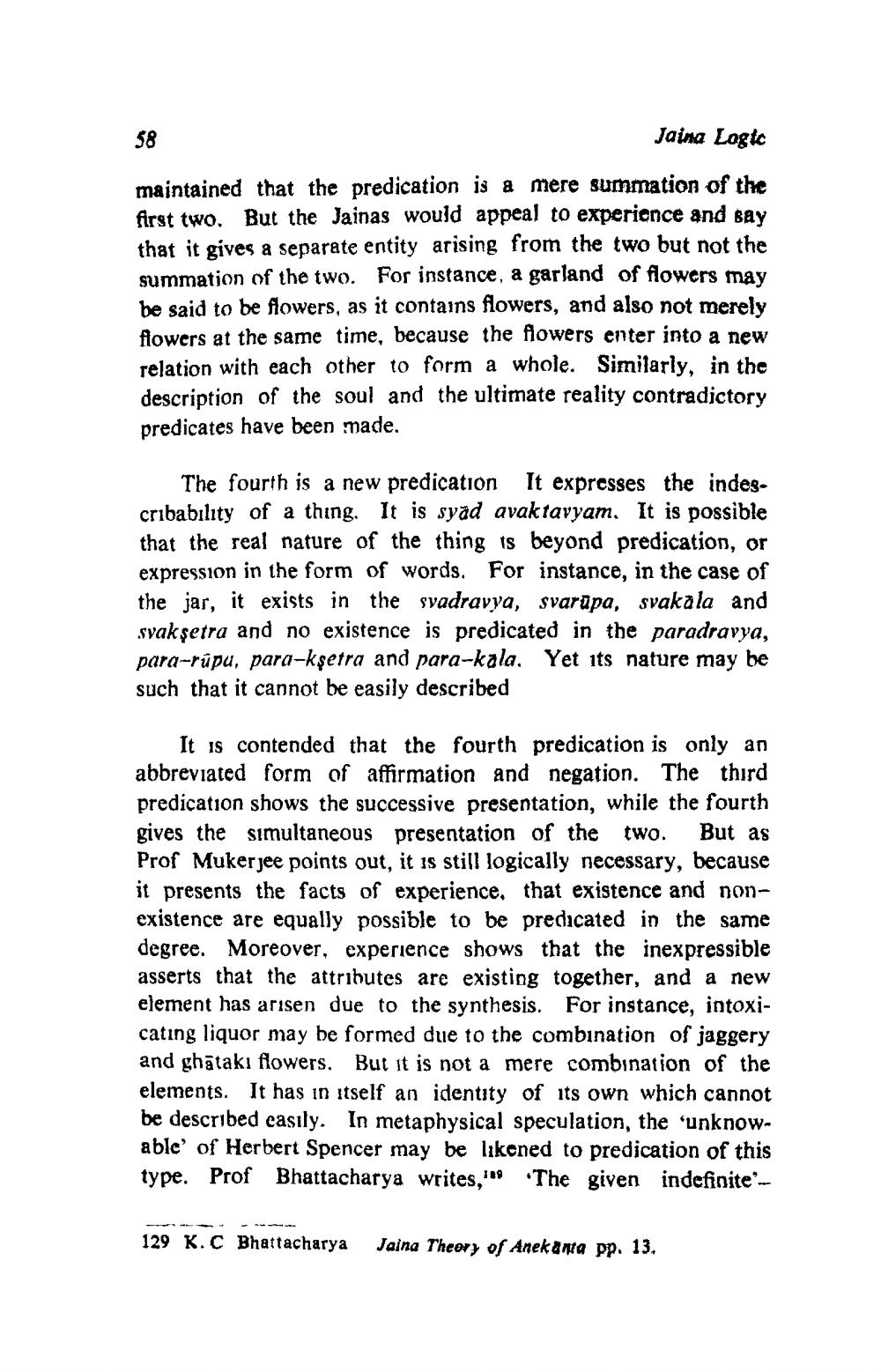________________
58
Jaina Logte
maintained that the predication is a mere summation of the first two. But the Jainas would appeal to experience and bay that it gives a separate entity arising from the two but not the summation of the two. For instance, a garland of flowers may be said to be flowers, as it contains flowers, and also not merely flowers at the same time, because the flowers enter into a new relation with each other to form a whole. Similarly, in the description of the soul and the ultimate reality contradictory predicates have been made.
The fourth is a new predication It expresses the indes. cribability of a thing. It is syad avaktavyam. It is possible that the real nature of the thing is beyond predication, or expression in the form of words. For instance, in the case of the jar, it exists in the svadravya, svarūpa, svakala and svakşetra and no existence is predicated in the paradravya, para-rüpu, para-kşetra and para-kala Yet its nature may be such that it cannot be easily described
It is contended that the fourth predication is only an abbreviated form of affirmation and negation. The third predication shows the successive presentation, while the fourth gives the simultaneous presentation of the two. But as Prof Mukerjee points out, it is still logically necessary, because it presents the facts of experience, that existence and nonexistence are equally possible to be predicated in the same degree. Moreover, experience shows that the inexpressible asserts that the attributes are existing together, and a new element has arisen due to the synthesis. For instance, intoxicating liquor may be formed due to the combination of jaggery and ghatakı flowers. But it is not a mere combination of the elements. It has in itself an identity of its own which cannot be described easily. In metaphysical speculation, the “unknowable of Herbert Spencer may be likened to predication of this type. Prof Bhattacharya writes,'" "The given indefinite
129 K.C Bhattacharya
Jaina Theory of Anekanta pp. 13.




